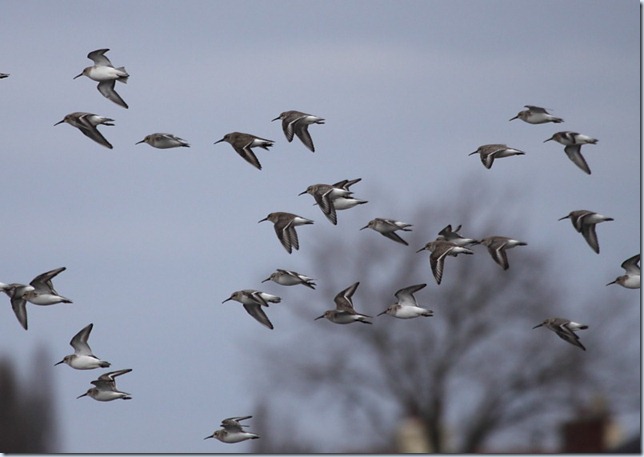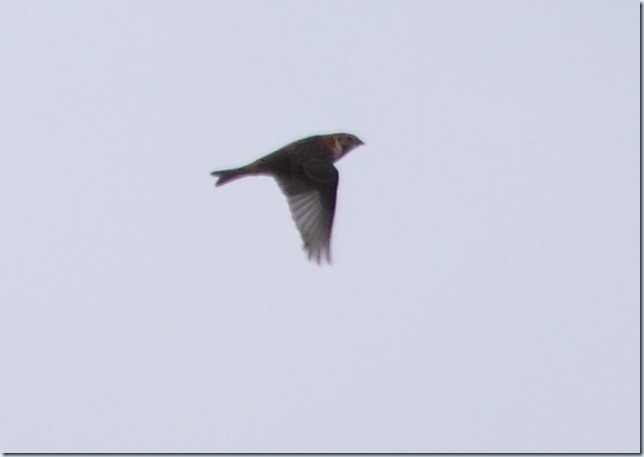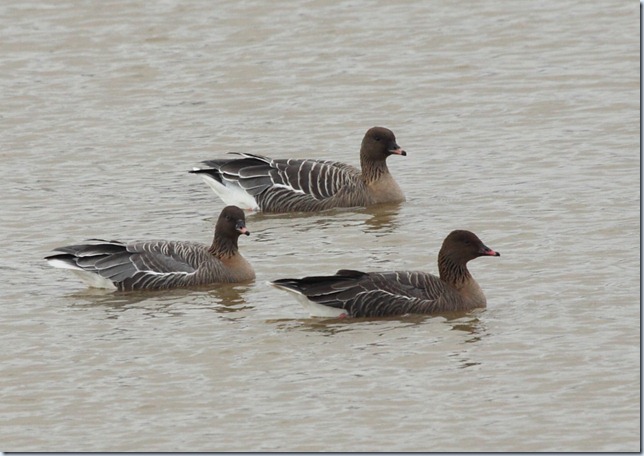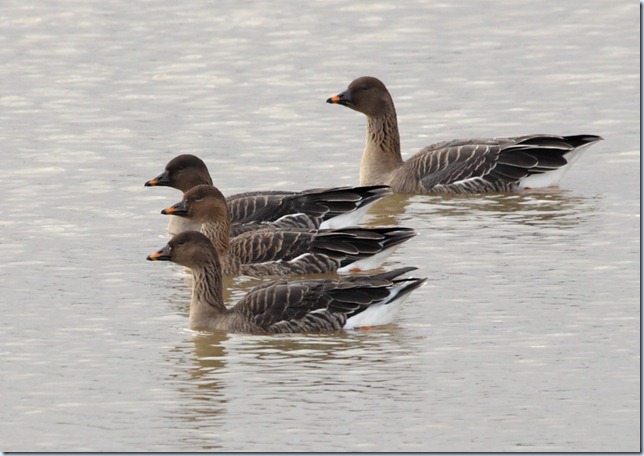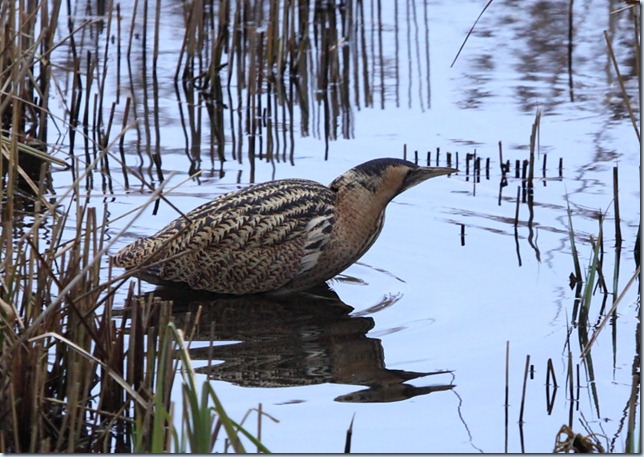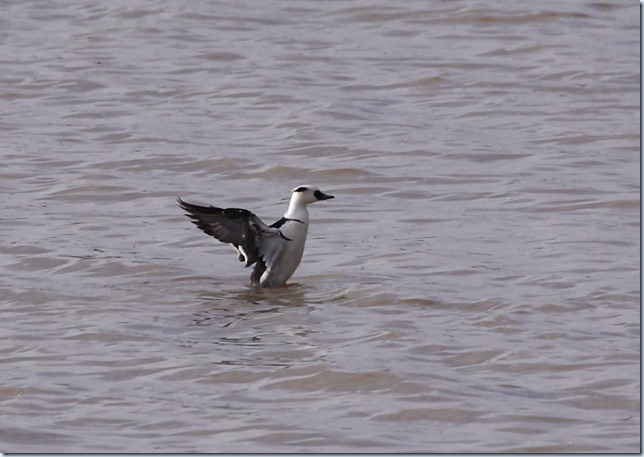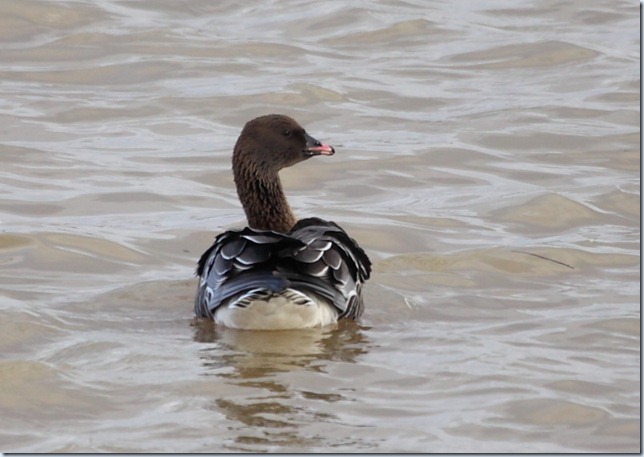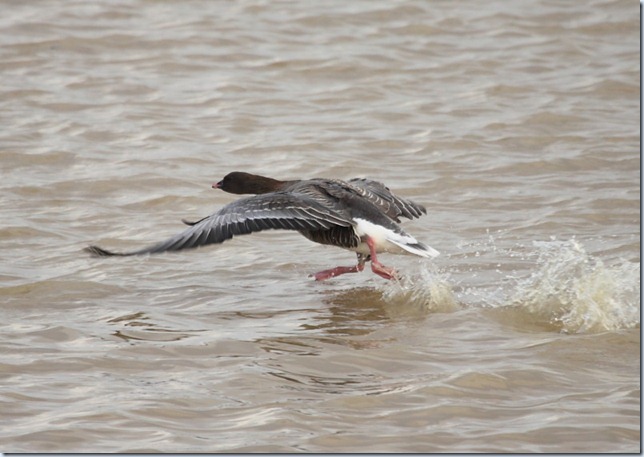Another excellent day out with Paul and Jono took in a great range of scarce birds. After a bit of a false start at Goldhanger, where we failed to locate any divers or grebes of note, we returned to Braxted Park to find some Hawfinches. The birds were fairly mobile, moving between tall tree tops just inside the park, but we got good views and counted at least 10 individuals including some very smart males. Just up the road towards Inworth, the regular Red Kite showed very well, first perched and then in flight. It’s clearly an immature bird, with pale tips to the coverts showing as a thin wing bar (see bad photo below), and the breast is a pale creamy colour, rather than the richer russet of an adult. 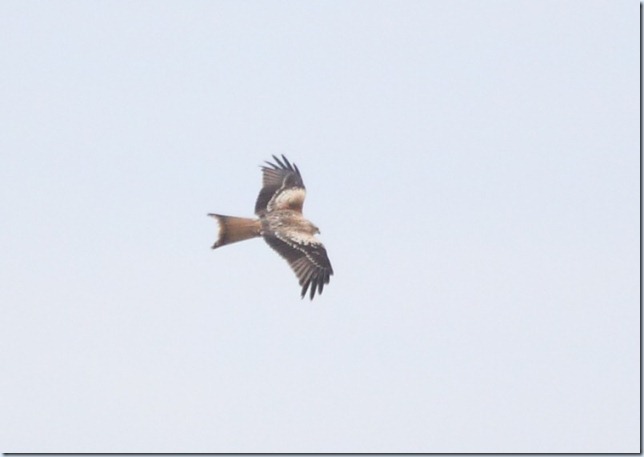
Moving on, we headed onto Mersea Island, initially to look through the massed waders on the falling tide. Nothing of note, but lots of challenging flight shot opportunities:
But the real reason we were here was a little further along. News through the week had described a good flock of Lapland Buntings, in a weedy field to the west of the southern end of the causeway. After a bit of legwork, we found the right area and got some decent flight views, counting a minimum of 28 birds – the spectacle of these looping round overhead, giving the characteristic rattle and ‘pew’ calls was superb. Unlike this photo.
By this time, the tide had gone too far out for us to find anything good from West Mersea prom (despite some impressive attempts at stringing Cormorants), so we moved back inland to Abberton. The dozen wild geese were still present from the Layer Breton causeway, and showed well along with up to 8 Smew (3 white nuns and 5 redheads). We also got distant views of a juv Hen Harrier from the Layer de la Haye, looking towards the pumping station, and a Bacon Roll showed well (though briefly).
Near Abberton Church, we picked up a couple of Corn Bunting in with c20 Yellowhammers (thanks Daryl!), before a final look off East Mersea produced 12 Eider.
